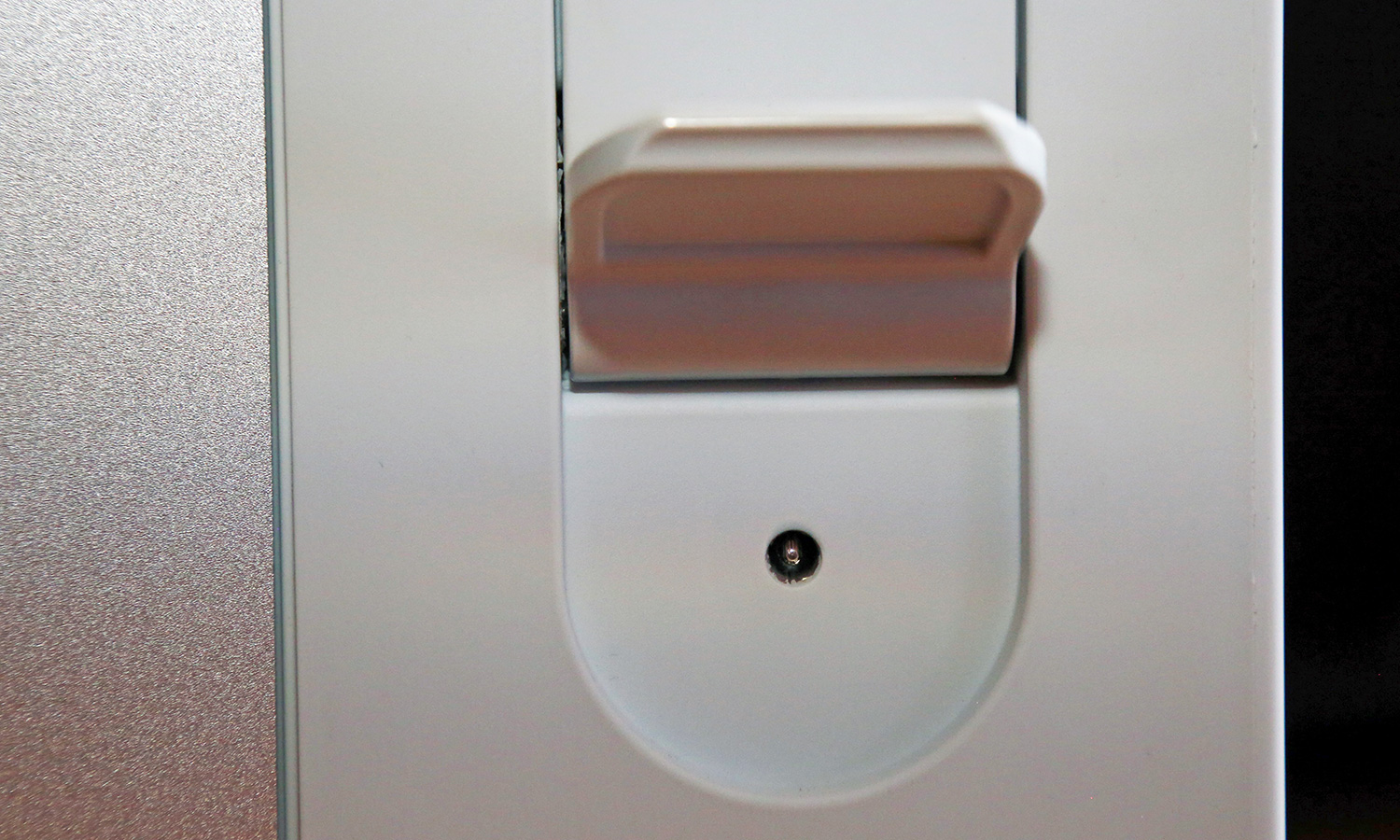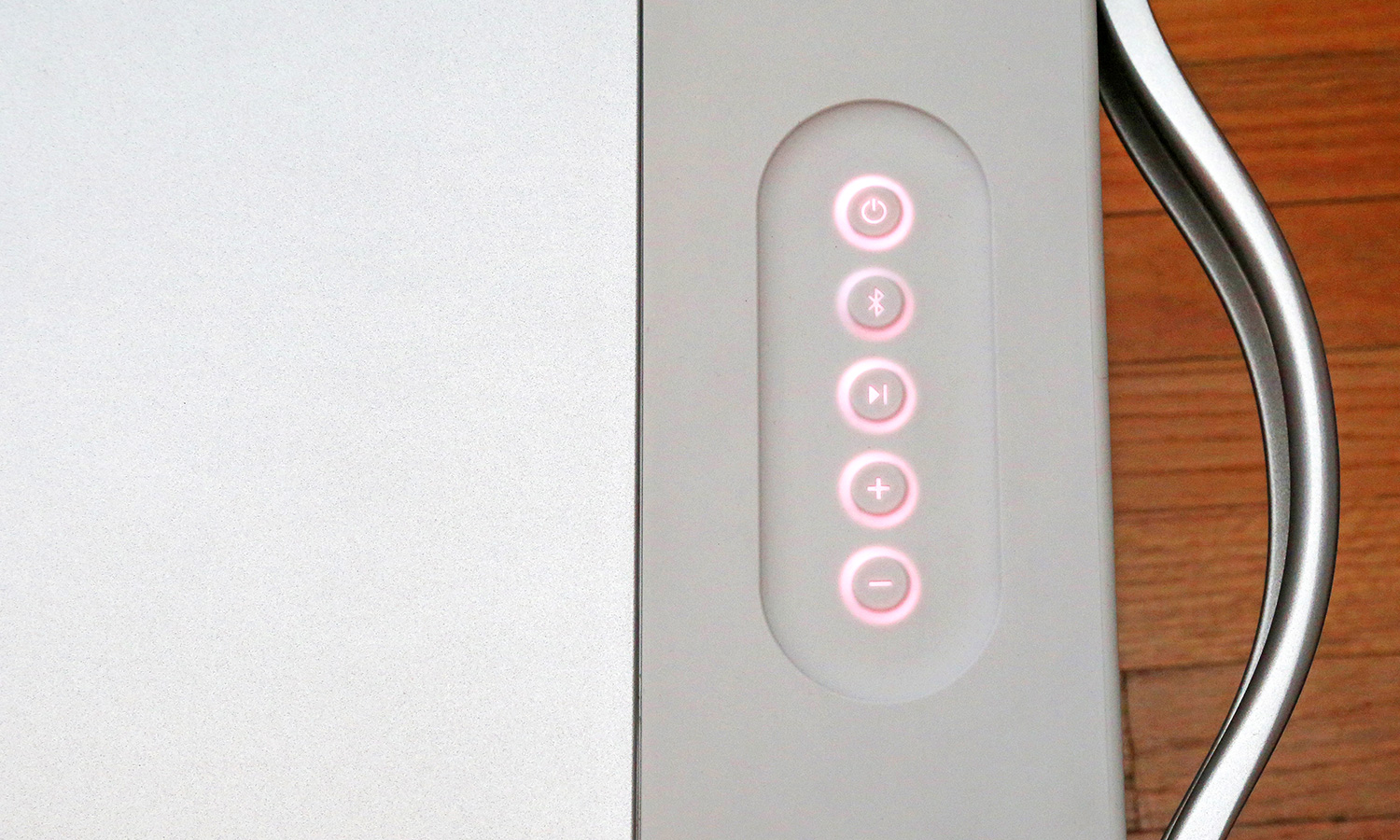Tom's Guide Verdict
The Thomas & Darden's Kube Speaker offers tremendous sound and keeps your beverages cold, but it does a number on your wallet.
Pros
- +
Big, booming audio Built-in, backlit cooler Water-resistant design Up to 50 hours of battery life
Cons
- -
Extremely expensive
Why you can trust Tom's Guide
Why, in a world dominated by wireless speakers that sound amazing and cost just a few hundred dollars, would anyone want to pay $3,000 for what amounts to the same thing? Sticker shock aside, Thomas & Darden's Kube wireless speaker comes with some neat features, including a built-in storage space that lets you keep your beer cold. And with handles you need to screw on each side, the hefty Kube is a bit easier to carry around. But is a $3,000 Bluetooth speaker really worth the price? Read on to find out.

Design
The first thing you'll notice when you break out the Kube from its box is just how big and hefty this smart speaker is. The Kube is about the size of a cooler and weighs a whopping 48 pounds. It's made of plastic, aluminum and rubber, and has handles you can attach to either side to make it easier to carry around. It's white and silver, which looks OK, but doesn't have a high-end design to match its price.
On top of the Kube, you'll see several buttons that let you turn it on, adjust volume, skip to another song and more. The buttons feel a little cheap for such an expensive device, but they are backlit, which adds a little design flair and makes it easier to use at night.

The Kube comes with a button just under the top of the device that, when pressed, opens a compartment. That chamber is actually a 37-quart storage space that can hold up to 16 standard-size bottles of wine or a case of beer cans.

You can even put throw some ice in there and the compartment will act like a cooler to keep your drinks and food cold. And when it's time to clean it out, a plug on the bottom is there to let you easily drain liquid from it.

The storage area was rather surprising — and not something you typically find in your wireless speaker. But I found it was quite handy. Even when I didn't use it to keep my beer cold, it was a quick and easy place to store accessories. And since the compartment is lit, you can use it day and night.

Aside from that, you'll find a line-in port and a USB charging port.
You can also plug in the wireless speaker to boost its battery life. All of those ports are hidden behind covers on the back to keep them protected when you're in the elements.

Overall, the Kube has a nice, if bulky, design. I wish it weren't so heavy, but little elements, like the door access and use of different materials, was welcome. But this is a decidedly outdoor-first speaker. I just don't see a reason for anyone to keep this big, bulky speaker in a room. And even if you did, it would take up so much room, you'd probably wish it weren't there.
Ruggedness
When you pick up the Kube the first time, its heftiness and solid, aluminum construction make you feel it would do a nice enough job of protecting its speakers. When my kids treated it a little more harshly than I might, the device experienced no problems. There's no official shock-resistance rating on the Kube, but the company said that the plastic it uses is "high-impact ABS," which can hold up when it's banged around.
MORE: Best Bluetooth Speakers for Home or On-the-Go
The Kube is "marine-certified" with an IPX4 rating, meaning it's both splash and water resistant. So, if you bring it outside in the rain or have it sitting next to you on the dock of the bay, it'll hold up.
Setup
There's really no set up to the Kube, either: it’s ready to go out of the box. I turned it on, and went to my smartphone's Bluetooth settings. I was immediately connected, and ready to start listening to music. And since it works with any Bluetooth-enabled device, you're not limited in the service or apps you want.
Audio Performance
There's no debating that the Kube sounds great. Any song I threw at it delivered crisp highs and lows. and bass and treble generally sounded solid. When I ramped up the volume as high as it would go on loud pop songs like "Despacito" or "24K Magic," the Kube would start to falter a bit and it would lose some of that crispness. But it was by no means a deal-breaker.

When I sat a little close to the Kube and listened to it at lower volumes, the speaker was rather nondescript. It sounded fine, but it wasn't delivering sound at levels that were substantially better than my Sonos speakers.
At 122-decibel maximum output, the Kube can blast audio up to 500 feet in any direction, thanks to its 360-degree-sound capabilities. As fun as it was jamming outdoors, it was just as fun to bring it indoors and crank it up. The floors and walls started vibrating, and the sound was outstanding. It was like I was at a club or a concert. It's not something you'd do if you want people to enjoy conversation, but if it's drowning sound you want in the house, the Kube delivers it.
I've been testing the Kube for several days and have yet to plug it in once.
Unsurprisingly, the Kube was substantially more powerful than other wireless speakers, like my Sonos Play:5. But you can place Sonos speakers in multiple areas. The Kube was crisper than the Play:5 at high volumes. When I played songs in the midrange and aimed at getting them to the same volume, I couldn't tell much of a difference. Bass was a bit better on the Kube, but it wasn't a major difference at those volumes. The moral of the story: the louder you go, the better Kube sounds when compared with the Sonos Play:5.
Battery Life and Bluetooth
I've been testing the Kube for several days, and have yet to plug it in once. The company claims the device can last up to 50 hours on a single charge, and I’m inclined to agree. And since it comes with a hefty battery pack inside, I've used it to charge my iPhone and still haven’t dealt with any low-battery problems. It's impressive.
Regarding wireless range, the Kube is actually quite versatile. Since the device features Bluetooth 4.1, you should be able to keep your source track going until you're about 90 feet away. With some obstacles in my way, I was able to keep the Kube going strong at 60 feet without trouble. Line-of-sight, however, ensured I kept a strong signal at that 90-foot mark.
In most cases, however, I simply connected the Kube to my home Wi-Fi network. Since my signal is strong, I could bring the Kube outside and connect to it as an AirPlay device on the same network as my iPhone. That effectively made the Bluetooth connection moot while making for far more flexibility, since I could bring my iPhone anywhere and still beam music to the Kube.
Bottom Line
Taking it on its own merits, the $3,000 Kube delivers outstanding sound. And its unique features, like the storage space, are actually quite appealing, especially when you're at the beach, or barbecuing or tailgating and want to consolidate supplies. Its long battery life and ability to charge your devices while on the go is another big selling point that shouldn't be overlooked.
But there are very real issues with the Kube, including its hefty size and mediocre design. Granted, Kube argues that its size is what allows for the storage space, but this thing is bulky, nonetheless. And when you don't have anything to store and just want to listen to music, its size can be a pain.
The Kube is an interesting and a compelling concept. But I could buy a few portable speakers, pair them together, buy myself a really nice Yeti cooler, and get the same effect. And I could do it all for far less than the Kube. I see the Kube more as an appealing solution for commercial users who have an outdoor business and want to play music for their patrons. The Kube could also be a suitable solution for those who have a boat and like regular excursions. But for the average consumer looking to listen to music with some friends, our best outdoor speakers might provide a better alternative.
Credit: Don Reisinger/Tom's Guide
Don Reisinger is CEO and founder of D2 Tech Agency. A communications strategist, consultant, and copywriter, Don has also written for many leading technology and business publications including CNET, Fortune Magazine, The New York Times, Forbes, Computerworld, Digital Trends, TechCrunch and Slashgear. He has also written for Tom's Guide for many years, contributing hundreds of articles on everything from phones to games to streaming and smart home.
